Teaching Pronouns in Speech Therapy
Teaching pronouns in speech therapy is a common target because children with language delays often have difficulty with using the correct pronouns in conversation, especially the “he” and “she” pronouns. Some children call everyone “he” or everyone “she” despite their gender, some children say “him” and “her” instead, and some children just omit them entirely. Well no matter how the child is changing it, it can make it very hard to follow his train of thought if you’re not sure exactly who he’s talking about.
When teaching pronouns, it helps to narrow your focus and teach one type of pronoun at a time. For example, you could choose to start with “he” and “she” pronouns. Or, you could target the pronoun “they”. If you choose “I” or “you”, those are often targeted together, and sometimes with the pronoun “we”. Choose where you are going to start and then follow the five steps below for teaching pronouns to a child in speech therapy or at home.
1. Receptive Identification of Pronouns
The first step to teaching pronouns is to help the child understand those pronouns (before we expect them to use them in conversational speech). We can start out by having the child point to the correct picture when we use a pronoun, for example: “he” or “she”. For gender-specific pronouns, we will start out by talking about how generally, boys go by “he” and girls go by “she”. We can talk about how this is not always the case for everyone but generally speaking, that’s where we start.
Show the child a picture of a boy doing something and of a girl doing the same thing. Then ask the child to point to the correct picture when you say “he is…” or “she is…”. You can do this for other pronouns as well. You can have the child point to “they are….” or “we are…”. The pronouns “I” and “you” get a little more tricky with this step so you may need to skip it for those pronouns.
When the child accurately can point to the correct picture, you can move on!
2. Teaching Pronouns in Short Phrases
Now we want the child to be able to say the pronouns in very short phrases. One way to do this for “he” and “she”, is to get a picture of a boy and a picture of a girl and then cut out pictures of objects (out of magazines or from online printouts). Place the boy and girl in front of the child. Hold up one object and say “who wants the ____?”. Help the child choose if he wants the boy to have it or the girl. Then, help the child say “he does” or “she does”.
Below is an example of a product of mine that allows you to do just this (click here to download the Teaching Pronouns File Folder Game):
Another way you can use “he” and “she” in phrases is by placing two pictures in front of the child of a boy and a girl doing something. Then, ask the child “who is ____-ing?” and help the child answer “he is” or “she is”. For example, you could put down a picture of a boy riding his bike and a girl clapping her hands. Then you could ask, who is riding? The child would then need to say “he is”.
Below is an example of a product of mine that contains action pictures (these are also free! Click here to access the Verb Cards for Free):
You can do this same thing with other pronouns as well. For the pronoun “they”, use pictures of more than one person doing actions so the child can practice saying “they are” or “they do”. You can even go back and forth between one child and multiple children to practice “he is” and “they are”.
For “I”, “you”, and “we” pronouns, it might be easier to do this in real life (instead of with pictures). Hold an object and have the child hold a different object. Say “who has the ___”. Then help the child either say “I do” or “you do”. You can even both hold the same thing and practice “we do”.
3. Teaching Pronouns in Sentences
Once the child can use the pronouns in simple phrases, have the child create sentences using “he” and “she”. Show the child pictures of people doing things and have him describe the picture using pronouns (such as “she is riding her bike”). You could use family photos, pictures of people online, or pictures from magazines. I have a photo album on my work iPad full of pictures of people doing various actions. I searched Google Image Search and saved ones that would be helpful for therapy. Then, I saved them all into one photo album so I can access them whenever I need to.
If your child says “the boy is riding” or “Johnny is riding” instead of using the pronoun, you can say, “Yes, the boy is riding. If it’s a boy, do we say ‘he’ or ‘she’?” Then, have your child repeat the sentence using “he” or “she”. If your child uses the wrong pronoun, repeat it back to her with the error as though it were a question. For example, if she says “she is riding” but it’s a boy, you could say “She is riding??”. Pause for a moment and see if she can correct the error herself. If not, correct it for her by saying something like “this is a boy, do we say ‘he’ or ‘she’?”.
For “I”, “you”, and “we” pronouns, help the child describe what you are doing and what he/she is doing. This is also a great opportunity to start talking about possessive pronouns (like “his, her, theirs,” etc.) and object pronouns (the ones often at the end of the sentence like “him, her,” etc.) as they naturally occur during these sentences.
4. Teaching Pronouns When Describing Story Books or Making up Stories
As we are teaching pronouns, we want to continue to increase the difficulty level of the tasks we choose. Once the child can correctly use the target pronouns in single sentences, you will need to make the activities more difficult. Get out a story book that has different characters and have the child describe what’s happening in the pictures. Make sure that the child uses the correct pronouns (he/she/they) when describing what’s going on. If you are working on “I/you/we”, you might want to take pictures of you and the child doing activities so you can go back and talk about what each person was doing.
You can also do this same activity while making up stories. Make sure that your child uses the target pronouns when telling you about the characters in his story. For “I/you/we”, make sure they are using themselves and you in their made up story.
If you need some picture cues to help your child create a story and keep track of the characters, events, places, etc., take a look at the Once Upon A Time card game on Amazon. This game has cards for various fairy tale characters, events, places, descriptors, and more. You can play the game according to the directions or just use the cards to help you create a story. Click the picture below to follow my affiliate link to view the product on Amazon:
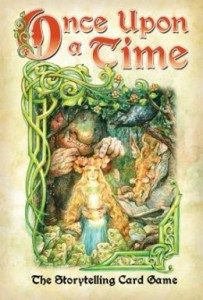
5. Teaching Pronouns In Conversational Speech
Now that the child can use the target pronoun in sentences and structured story-telling tasks, it’s time for the child to start using the pronouns correctly all the time. When you hear your child use these pronouns incorrectly, use one of the following prompts to try to guide the child back to using the correct word:
- Repeat the error back as a question: “She is running?”
- Ask if the person is a boy or a girl and then ask which pronoun should be used: “Is that a boy or a girl? Ok, so should we say ‘he’s my friend’ or ‘she’s my friend’?”
- Catch the error and (kindly) point it out to your child: “Oh, you mean ‘they are happy’.”
- Fix the error without pointing it out: “Yes, we are at Grandma’s house.”
At first, try not to correct every pronoun the child says incorrectly because there will most likely be a lot of them. Try setting aside a certain time that you will correct the child and let him know ahead of time. For example, you might say “For the next 5 minutes, I want you to focus really hard on saying “he” and “she”. I’m going to help you remember if you forget, ok?”. This will help the child understand that you’re not going to bug him all of the time, just during certain “good speech time” activities.
As the child gets better, you can start catching and correcting more of his errors but start off small so that he doesn’t get frustrated. After a while, the child should begin to produce more correctly and you should be able to provide fewer prompts.
Start Over with Teaching Other Pronouns
Once you get to the conversational level, you’re ready to go back and target another set of pronouns if there are still others that the child needs help with, or move on to other grammar skills. Just remember, this whole process takes time and it may take months of working this process before the child is able to use he she correctly all the time. Have patience and have faith that your child can do it, it will just take a lot of practice. That’s why she has you though, to help her through it!
Additional Resources for Teaching Pronouns

About the Author: Carrie Clark, MA CCC-SLP
Hi, I’m Carrie! I’m a speech-language pathologist from Columbia, Missouri, USA. I’ve worked with children and teenagers of all ages in schools, preschools, and even my own private practice. I love digging through the research on speech and language topics and breaking it down into step-by-step plans for my followers.
Fun Fact: My own children have special needs. I won’t go into any detail (to protect their privacy) but I’ve been through IEP meetings from the parent perspective and man, do they suck. It definitely has helped me understand the perspective of the parents I work with as a professional as well!
Connect with Me:

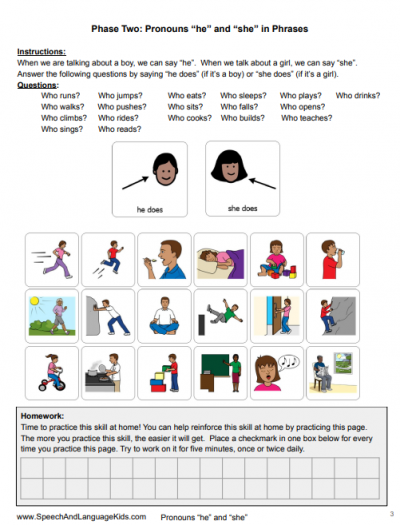
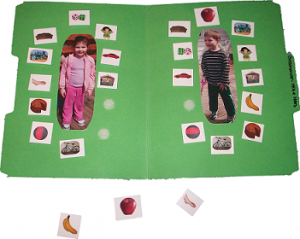
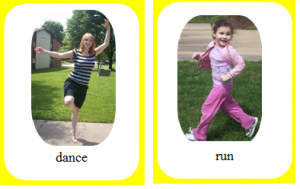
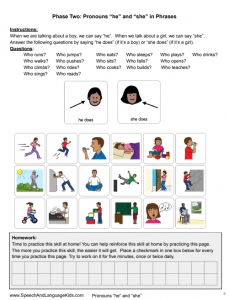
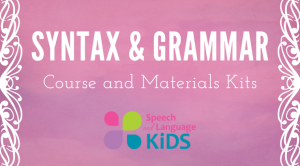
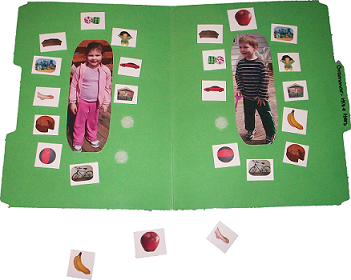
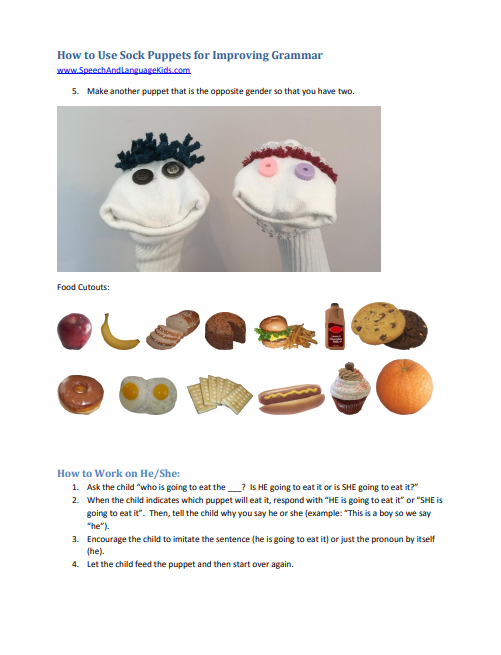
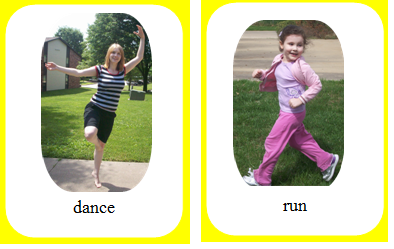
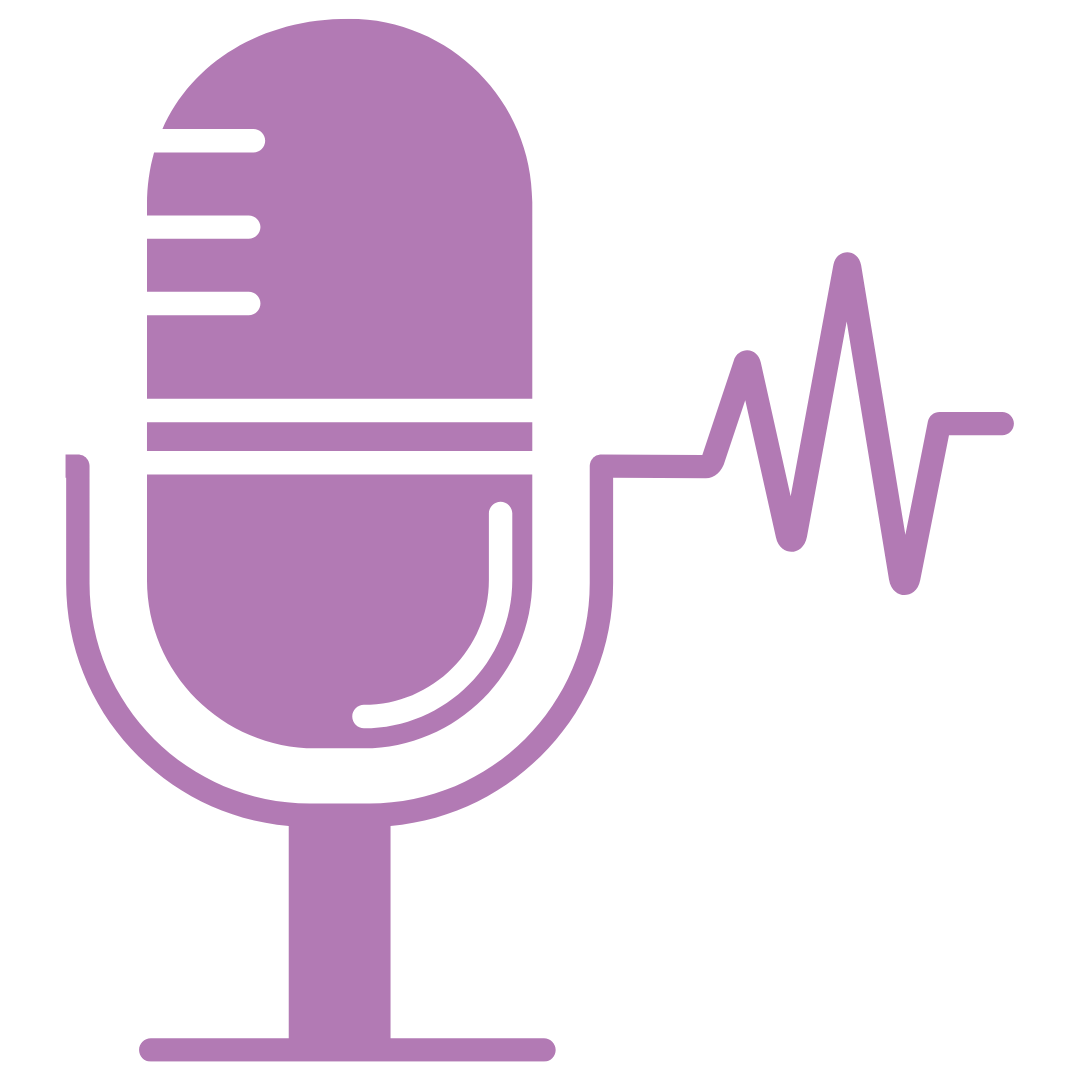
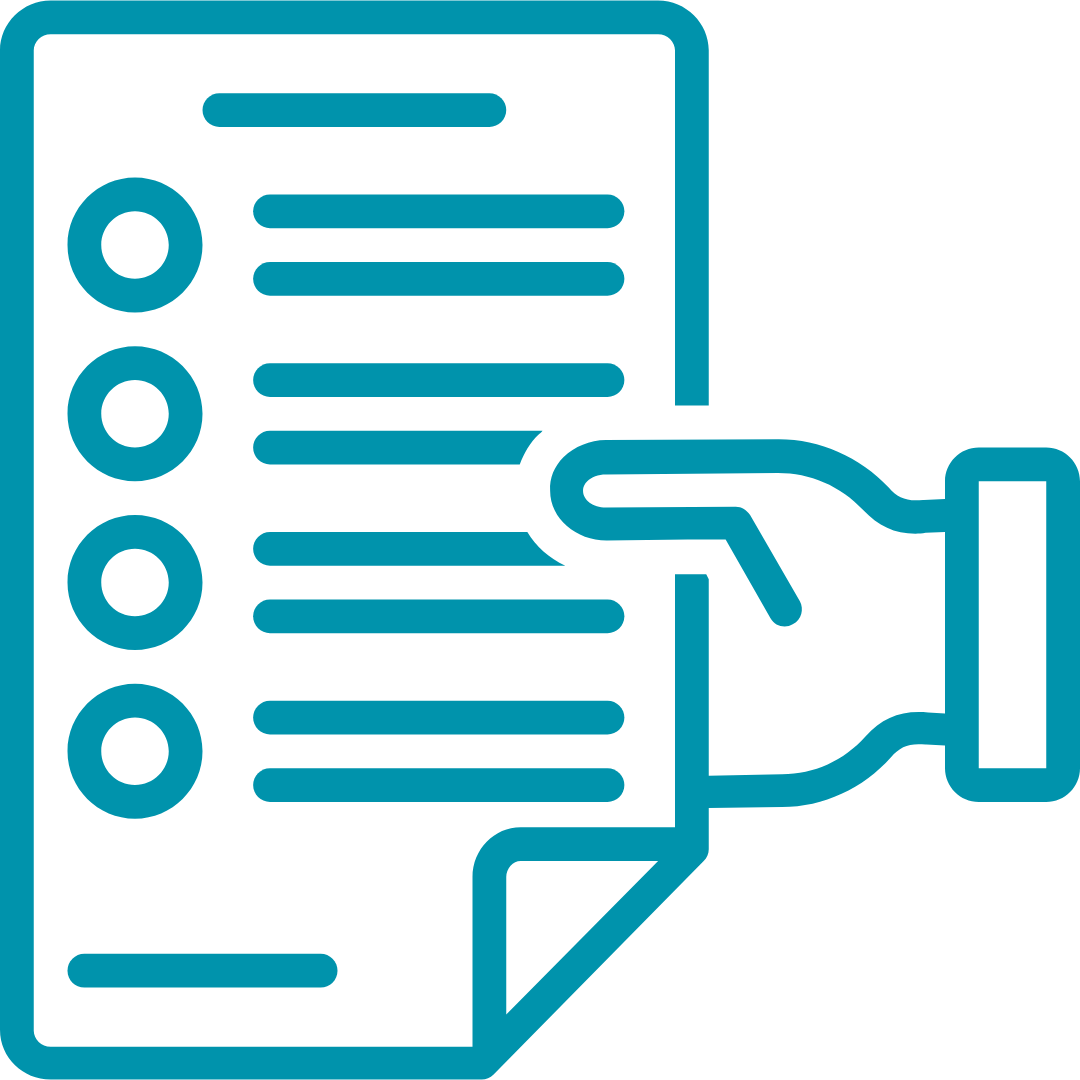
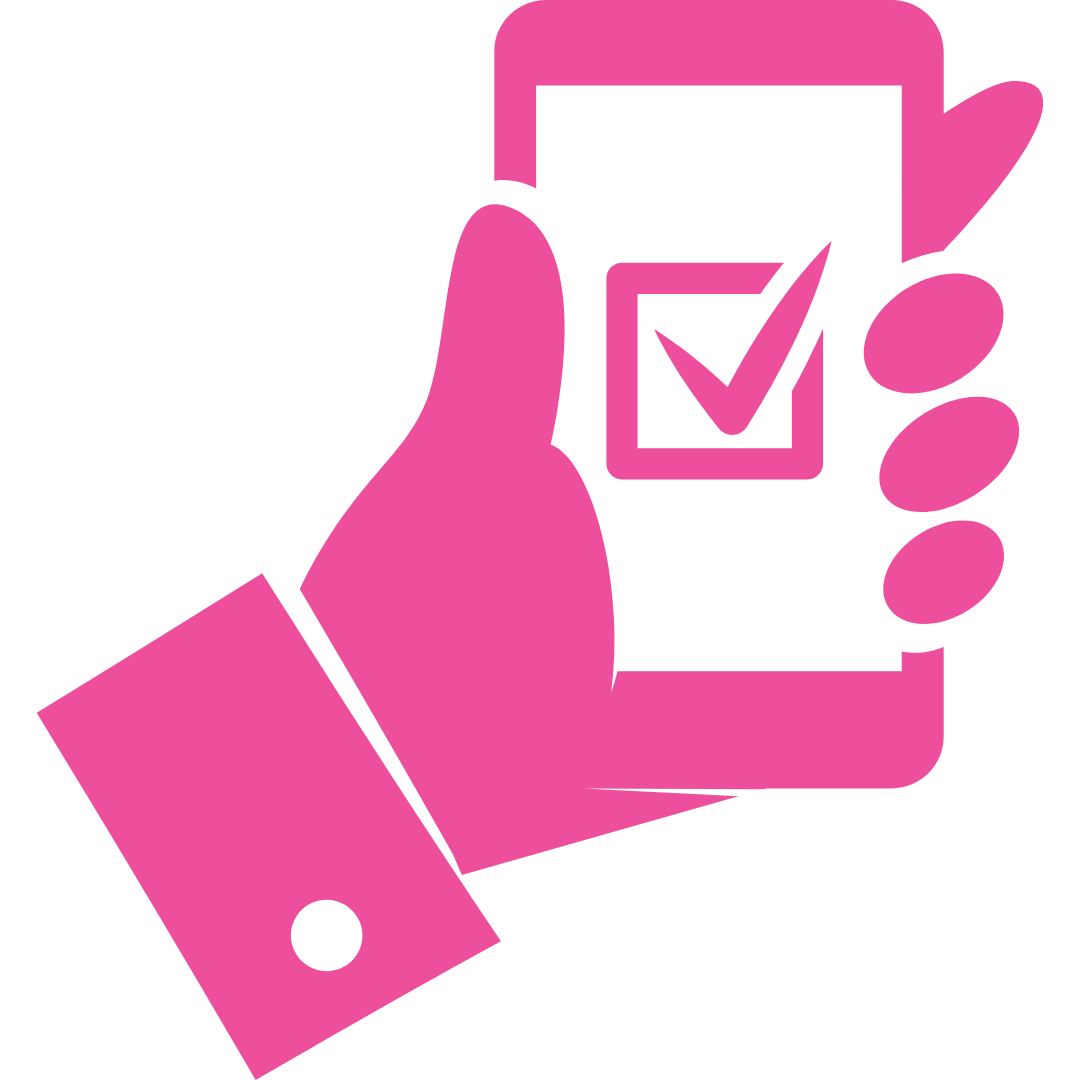
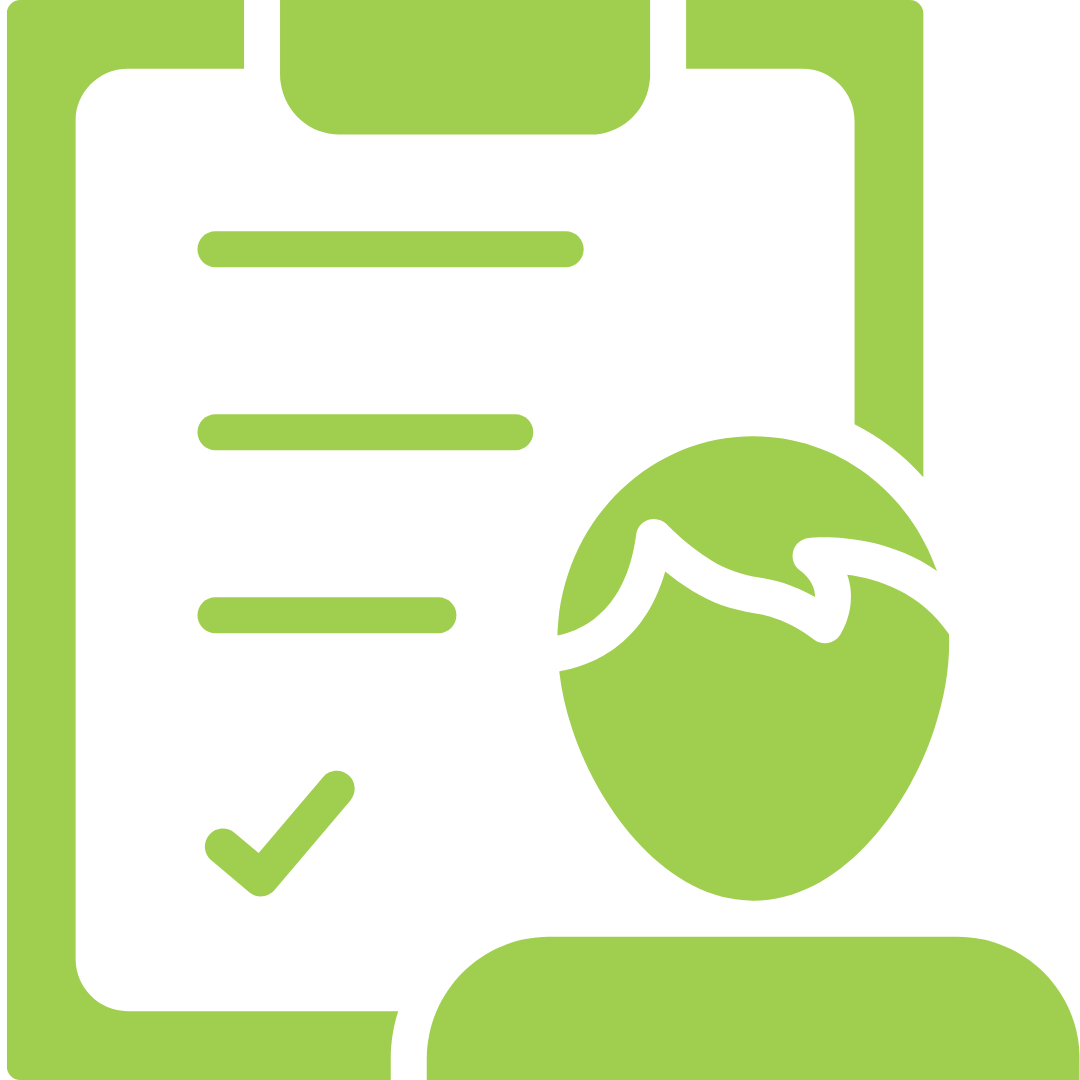
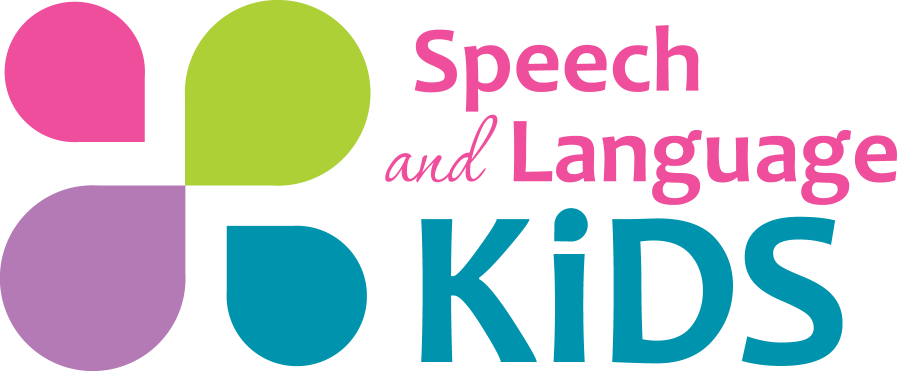
This is great – I copied this blog entry onto a document (ensuring I kept the credits and the link to your store :), reduced the font and pictures and got it on two pages to use as a handout for my assistants and some of our families. Now if there was some way to ensure that families are following through with home practice… Thanks for this – it was really helpful and written at just the right level for most people to understand.
That’s wonderful!! I’m glad you were able to use this, that’s always my intention! Good luck!!
Hi! Currently, I am taking a college course and would like to use this article to support an assignment. Therefore, I need to cite in an APA format and I am missing some of the information needed. Is there any chance you can email me the information? I would like the author’s name and last name, and the date that was published. I wasn’t able to find it.
Thank you for your help.
Hi, Allison-Please email us at speechandlanguagekids.com and give us a bit of detail as to what you are actually looking for, as well as the blog post you found the original information at, and someone would be more than happy to research this for you.
My 6-year old says “her” instead of “she” (as in, “Her likes ice cream.”) I don’t correct him directly–just reflect what he says “Oh, she likes ice cream?” Is this kind of error unusual for a 6-year old? Should I be correcting him more directly?
The research shows that by 6 years old, most children are able to correctly use “he” and “she” in conversational speech. I would recommend trying some of the strategies in this article with your child and see if that helps. If not, you may want to seek out advice from a speech-language pathologist in your area. Your child’s school should have access to someone you can talk to. Good luck!
My almost 5 year old is struggling with the use of his and hers and he and she. Thanks for these ideas.
Absolutely! I know a lot of children who struggle with this so I’m glad to help!
thank you
My child knows the difference between he/she, him/her, his/her(s)… But rather struggles with the difference between she/her… Typically using her in the beginning of a phrase or sentence that should begin with she…
That can be a problem as well! Try coming up with little games where she has to practice saying “she is…” over and over again. You could use my verb cards and have her practice saying “she is running, she is jumping”, etc. You could also have her talk about what people are doing at the park or somewhere else. Also, correct errors when you hear them in conversation. Say, “you can say ‘SHE is running'”.
at what age do kids stop doing this typically?
THANK You!!
You put together such wonderful resources that I can share with parents. You are helping so many kiddos through your great resources!
Many thanks!….school SLP in Minnesota 🙂
Thank you so much for your kind words! I am constantly amazed at how many people all over the world I am able to help with this website!
Thank you for your clearly stated strategy plan for teaching the pronouns to share with other parents.
You’re welcome! That’s what I do here 🙂
Wow – I’m so relieved there are other people dealing with this. My son has been in speech therapy since he turned 1. First for not babbling. Then for not saying words. Then we focused on saying whole words. Finally, at almost 5, his articulation is on target for his age, but we’re dealing with pronoun issues and not putting questions together properly. This is an excellent resource for the pronoun problem. Do you have a similar article that gives strategies for correcting question structure. For instance he will say “I can go with you mom?” instead of “can I go with you mom?”.
Why yes, yes I do!! 🙂
https://www.speechandlanguagekids.com/asking-questions-with-good-word-order/
I hope that helps! I’m so glad this article was helpful to you as well!
Thank you so much, I am so glad I found this. My 6 year old son has always had some speech delays. We work diligently with him at home and his pediatrician says that we are making good progress so we just keep doing what we are doing. However, he does still mix up he/she, her/him. I am going to use these methods for a few months before going to the pediatrician with it.
Sounds great! Best of luck!
Hi from Sweden!
Great tips
My daughter is only 2.5 and generally her language is advanced. However, she uses “her” instead of “she.” An example would be (about her baby doll), Her’s crying because her has an ouchie.” At this age, is it worth using the strategies above or is it likely to self correct? Thanks!
thank you so much. i love to read it. i used it to teach my kids in my kindergarten.
Hi my daughter is 3.5 and confuses he and she when describing people, family etc is this age appropriate? Thanks
Hello, Belinda- Thank you so much for reaching out. Unfortunately, we get a ton of questions every day about how to solve specific speech/language problems. Since we have such a small staff, we aren’t able to answer every question that comes through on the website, social media, or via email. If you are a parent, we suggest you reach out to a local speech-language pathologist who can work with your child directly and answer your question.
If you are another speech-language professional, we have created a membership where we pay a full staff to answer questions like this on a regular basis. We would be more than happy to answer your question inside the membership program. We’re able to answer more questions in here because we have a full library of questions that we’ve already answered so our staff can either link you to the answer if it exists, or write you a custom response if needed. We’d love to see you inside the membership!
Click Here to Become a Member: https://www.slpsolution.com/pediatric-signup/.
I am from South Africa. I am working with a 6 year old girl who is on the spectrum and attending mainstream preschool. She is brilliant but her pronouns and prepositions need working on. This will be really helpful. thank you so much.
Much appreciated.
You are very welcome, Fathima! Please let us know if you have any questions.
The use of pronouns is definitely a frequently asked question for me with my client’s families! This article is helpful as a resource to share with families!